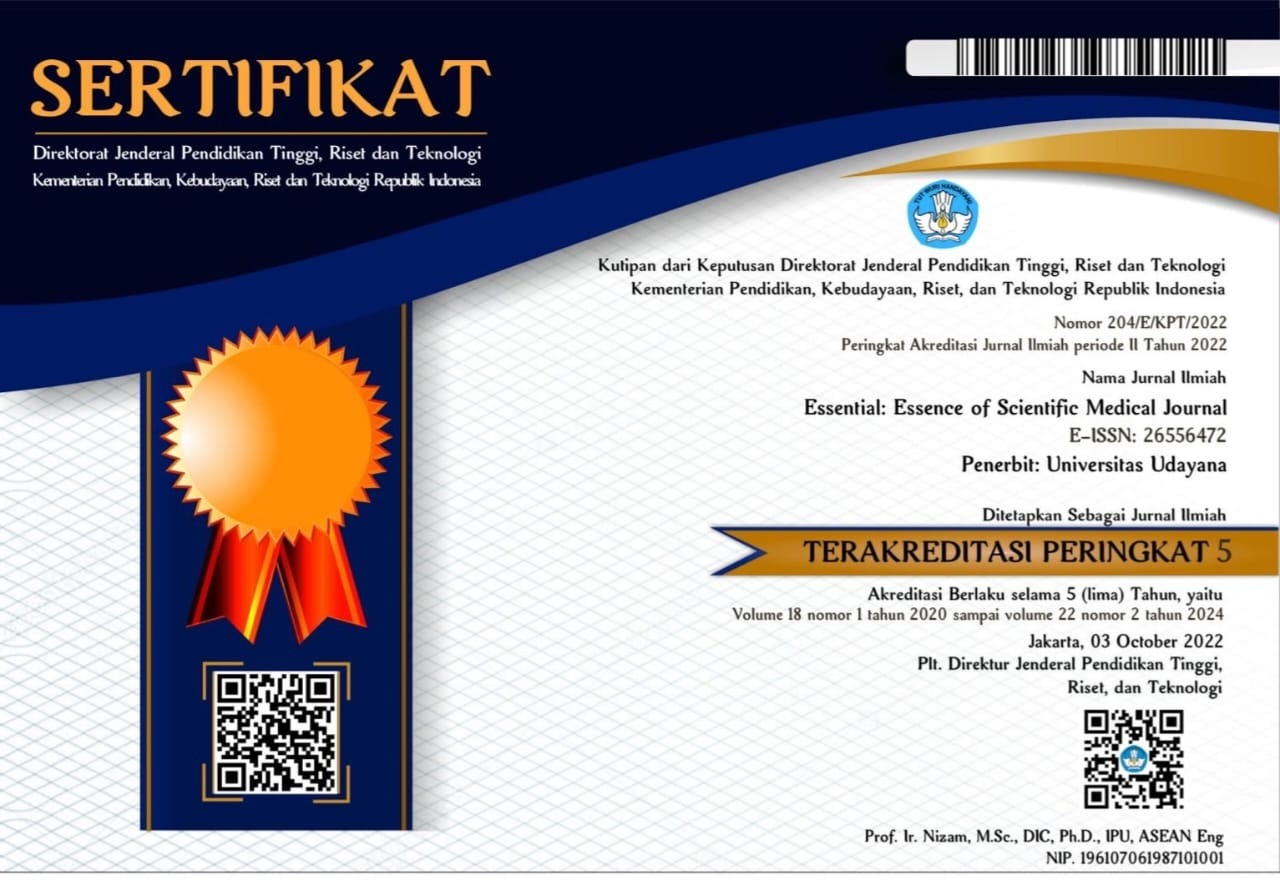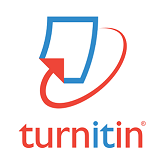PLK1 Inhibitor as a Novel Therapy for Triple-Negative Breast Cancer
Abstract
Introduction: The prevalence of Breast Cancer has increased throughout the years. The disease also carries a high risk of mortality. The receptors found on breast cancer cells are essential considerations in determining effective therapy and prognosis. Triple Negative Breast Cancer (TNBC) is a subtype of breast cancer that does not express most of the receptors that usually expressed by breast cancer cells. This subtype has high mortality, one of which is due to limited therapeutic options and low efficacy, therefore increasing the need of new therapy for TNBC.
Discussion: Overexpression of polo-like kinase 1 (PLK1) is associated with poor prognosis in TNBC. Excessive PLK1 activity causes high cell proliferation and increases cell proliferation stress so that cell chromosome instability can occur. PLK1 inhibitors work by affecting the cell cycle and apoptosis of cancer cells. Currently, the metabolic mechanism of PLK1 inhibitors is not clearly known, but it has been proven that absorption through oral administration is quite good. Side effects from using PLK1 inhibitors are common, but most can be managed
Conclusion: Considering the limited treatment options for TNBC and the relatively good efficacy of PLK1 inhibitors, this encourages the recommendation to use PLK1 as a TNBC therapy, especially in patients with therapy resistance, regardless of the side effects that can be caused.
Downloads
References
2. Siegel RL, Miller KD, Fuchs HE, Jemal A. Cancer statistics, 2022. CA Cancer J Clin. 2022 Jan;72(1):7–33.
3. Indonesia KKR. Laporan Nasional Riskesdas 2018. 2018.
4. Han Y, Moore JX, Colditz GA, Toriola AT. Family History of Breast Cancer and Mammographic Breast Density in Premenopausal Women. JAMA Netw open. 2022 Feb;5(2):e2148983.
5. Dunneram Y, Greenwood DC, Cade JE. Diet, menopause and the risk of ovarian, endometrial and breast cancer. Proc Nutr Soc. 2019 Aug;78(3):438–48.
6. Friedenreich CM, Ryder‐Burbidge C, McNeil J. Physical activity, obesity and sedentary behavior in cancer etiology: epidemiologic evidence and biologic mechanisms. Mol Oncol. 2021 Mar;15(3):790–800.
7. Kang C, LeRoith D, Gallagher EJ. Diabetes, Obesity, and Breast Cancer. Endocrinology. 2018 Nov;159(11):3801–12.
8. Harbeck N, Penault-Llorca F, Cortes J, Gnant M, Houssami N, Poortmans P, et al. Breast cancer. Nat Rev Dis Prim. 2019 Sep;5(1):66.
9. Yin L, Duan J-J, Bian X-W, Yu S. Triple-negative breast cancer molecular subtyping and treatment progress. Breast Cancer Res. 2020 Dec;22(1):61.
10. Derakhshan F, Reis-Filho JS. Pathogenesis of Triple-Negative Breast Cancer. Annu Rev Pathol Mech Dis. 2022 Jan;17(1):181–204.
11. Gupta GK, Collier AL, Lee D, Hoefer RA, Zheleva V, Siewertsz van Reesema LL, et al. Perspectives on Triple-Negative Breast Cancer: Current Treatment Strategies, Unmet Needs, and Potential Targets for Future Therapies. Cancers (Basel). 2020 Aug;12(9):2392.
12. Baranova A, Krasnoselskyi M, Starikov V, Kartashov S, Zhulkevych I, Vlasenko V, et al. Triple-negative breast cancer: current treatment strategies and factors of negative prognosis. J Med Life. 2022 Feb;15(2):153–61.
13. Luo C, Wang P, He S, Zhu J, Shi Y, Wang J. Progress and Prospect of Immunotherapy for Triple-Negative Breast Cancer. Front Oncol. 2022;12(June):1–22.
14. Zhang Y, Zhang Z. The history and advances in cancer immunotherapy: understanding the characteristics of tumor-infiltrating immune cells and their therapeutic implications. Cell Mol Immunol. 2020 Aug;17(8):807–21.
15. Qiu D, Zhang G, Yan X, Xiao X, Ma X, Lin S, et al. Prospects of Immunotherapy for Triple-Negative Breast Cancer. Front Oncol. 2022;11(January):1–10.
16. Li Y, Zhang H, Merkher Y, Chen L, Liu N, Leonov S, et al. Recent advances in therapeutic strategies for triple-negative breast cancer. J Hematol Oncol. 2022 Aug;15(1):121.
17. Chiappa M, Petrella S, Damia G, Broggini M, Guffanti F, Ricci F. Present and Future Perspective on PLK1 Inhibition in Cancer Treatment. Front Oncol. 2022;12(June):1–15.
18. Kim T. Recent Progress on the Localization of PLK1 to the Kinetochore and Its Role in Mitosis. Int J Mol Sci. 2022 May;23(9):5252.
19. García IA, Garro C, Fernandez E, Soria G. Therapeutic opportunities for PLK1 inhibitors: Spotlight on BRCA1-deficiency and triple negative breast cancers. Mutat Res Mol Mech Mutagen. 2020 May;821(February):111693.
20. Zhang Z, Chen C, Ma L, Yu Q, Li S, Abbasi B, et al. Plk1 is essential for proper chromosome segregation during meiosis I/meiosis II transition in pig oocytes. Reprod Biol Endocrinol. 2017 Dec;15(1):69.
21. Kagami Y, Ono M, Yoshida K. Plk1 phosphorylation of CAP-H2 triggers chromosome condensation by condensin II at the early phase of mitosis. Sci Rep. 2017 Jul;7(1):5583.
22. Adriaans IE, Basant A, Ponsioen B, Glotzer M, Lens SMA. PLK1 plays dual roles in centralspindlin regulation during cytokinesis. J Cell Biol. 2019 Apr;218(4):1250–64.
23. Cunningham CE, MacAuley MJ, Vizeacoumar FS, Abuhussein O, Freywald A, Vizeacoumar FJ. The CINs of Polo-Like Kinase 1 in Cancer. Cancers (Basel). 2020 Oct;12(10):2953.
24. Dagogo-Jack I, Shaw AT. Tumour heterogeneity and resistance to cancer therapies. Nat Rev Clin Oncol. 2018 Feb;15(2):81–94.
25. Institute NC. PLK1. 2023.
26. Ren Y, Deng R, Zhang Q, Li J, Han B, Ye P. Bioinformatics analysis of key genes in triple negative breast cancer and validation of oncogene PLK1. Ann Transl Med. 2020;8(24):1637–1637.
27. Duijf PHG, Nanayakkara D, Nones K, Srihari S, Kalimutho M, Khanna KK. Mechanisms of Genomic Instability in Breast Cancer. Trends Mol Med. 2019 Jul;25(7):595–611.
28. Lemmens B, Hegarat N, Akopyan K, Sala-Gaston J, Bartek J, Hochegger H, et al. DNA Replication Determines Timing of Mitosis by Restricting CDK1 and PLK1 Activation. Mol Cell. 2018 Jul;71(1):117-128.e3.
29. Gheghiani L, Wang L, Zhang Y, Moore XTR, Zhang J, Smith SC, et al. PLK1 Induces Chromosomal Instability and Overrides Cell-Cycle Checkpoints to Drive Tumorigenesis. Cancer Res. 2021 Mar;81(5):1293–307.
30. Quan M, Oh Y, Cho S-Y, Kim JH, Moon H-G. Polo-Like Kinase 1 Regulates Chromosomal Instability and Paclitaxel Resistance in Breast Cancer Cells. J Breast Cancer. 2022;25(3):178.
31. de Cárcer G. The Mitotic Cancer Target Polo-Like Kinase 1: Oncogene or Tumor Suppressor? Genes (Basel). 2019 Mar;10(3):208.
32. Cloud AS, Vargheese AM, Gunewardena S, Shimak RM, Ganeshkumar S, Kumaraswamy E, et al. Loss of REST in breast cancer promotes tumor progression through estrogen sensitization, MMP24 and CEMIP overexpression. BMC Cancer. 2022 Dec;22(1):180.
33. Hilton HN, Clarke CL, Graham JD. Estrogen and progesterone signalling in the normal breast and its implications for cancer development. Mol Cell Endocrinol. 2018 May;466:2–14.
34. Garlapati C, Joshi S, Bhattarai S, Krishnamurthy J, Turaga RC, Nguyen T, et al. PLK1 and AURKB phosphorylate survivin differentially to affect proliferation in racially distinct triple-negative breast cancer. Cell Death Dis. 2023;14(1).
35. Ueda A, Oikawa K, Fujita K, Ishikawa A, Sato E, Ishikawa T, et al. Therapeutic potential of PLK1 inhibition in triple-negative breast cancer. Lab Investig [Internet]. 2019;99(9):1275–86. Available from: http://dx.doi.org/10.1038/s41374-019-0247-4
36. Kudo K, Tsuyama N, Nagata K, Imaoka T, Iizuka D, Sugai-Takahashi M, et al. ΔNp63α transcriptionally represses p53 target genes involved in the radiation-induced DNA damage response. Radiat Oncol. 2022 Nov;17(1):183.
37. Srinivas US, Ramachandran GK, Wardyn JD, Hoppe MM, Peng Y, Lim S, et al. PLK1 inhibition selectively kills ARID1A deficient cells through uncoupling of oxygen consumption from ATP production. bioRxiv. 2021 Jan;2021.06.01.446664.
38. Gutteridge REA, Ndiaye MA, Liu X, Ahmad N. Plk1 Inhibitors in Cancer Therapy: From Laboratory to Clinics. Mol Cancer Ther. 2016 Jul;15(7):1427–35.
39. Wang B, Huang X, Liang H, Yang H, Guo Z, Ai M, et al. PLK1 Inhibition Sensitizes Breast Cancer Cells to Radiation via Suppressing Autophagy. Int J Radiat Oncol Biol Phys [Internet]. 2021;110(4):1234–47. Available from: https://doi.org/10.1016/j.ijrobp.2021.02.025
40. Hikichi Y, Honda K, Hikami K, Miyashita H, Kaieda I, Murai S, et al. TAK-960, a Novel, Orally Available, Selective Inhibitor of Polo-Like Kinase 1, Shows Broad-spectrum Preclinical Antitumor Activity in Multiple Dosing Regimens. Mol Cancer Ther. 2012 Mar;11(3):700–9.
41. Duffey MO, Vos TJ, Adams R, Alley J, Anthony J, Barrett C, et al. Discovery of a Potent and Orally Bioavailable Benzolactam-Derived Inhibitor of Polo-Like Kinase 1 (MLN0905). J Med Chem. 2012 Jan;55(1):197–208.
42. Kudo M, Zalles N, Distefano R, Nigita G, Veneziano D, Gasparini P, et al. Synergistic apoptotic effect of miR-183-5p and Polo-Like kinase 1 inhibitor NMS-P937 in breast cancer cells. Cell Death Differ. 2022;29(2):407–19.
43. Ruf S, Heberle AM, Langelaar-Makkinje M, Gelino S, Wilkinson D, Gerbeth C, et al. PLK1 (polo like kinase 1) inhibits MTOR complex 1 and promotes autophagy. Autophagy. 2017 Mar;13(3):486–505.
44. Bergin ART, Loi S. Triple-negative breast cancer: Recent treatment advances [version 1; peer review: 2 approved]. F1000Research. 2019;8:1–11.
45. Garufi G, Palazzo A, Paris I, Orlandi A, Cassano A, Tortora G, et al. Neoadjuvant therapy for triple-negative breast cancer: potential predictive biomarkers of activity and efficacy of platinum chemotherapy, PARP- and immune-checkpoint-inhibitors. Expert Opin Pharmacother [Internet]. 2020;21(6):687–99. Available from: https://doi.org/10.1080/14656566.2020.1724957
46. Iliaki S, Beyaert R, Afonina IS. Polo-like kinase 1 (PLK1) signaling in cancer and beyond. Biochem Pharmacol. 2021 Nov;193:114747.
47. Ha GH, Kim DY, Breuer EK, Kim CK. Combination treatment of polo-like kinase 1 and tankyrase-1 inhibitors enhances anticancer effect in triple-negative breast cancer cells. Anticancer Res. 2018;38(3):1303–10.
48. Patel JR, Thangavelu P, Terrell RM, Israel B, Sarkar AB, Davidson AM, et al. A Novel Allosteric Inhibitor Targets PLK1 in Triple Negative Breast Cancer Cells. Biomolecules. 2022;12(4).
49. Su S, Chhabra G, Singh CK, Ndiaye MA, Ahmad N. PLK1 inhibition-based combination therapies for cancer management. Transl Oncol [Internet]. 2022;16(October 2021):101332. Available from: https://doi.org/10.1016/j.tranon.2021.101332
50. Lashen AG, Mongan NP, Toss MS, Wootton L, Green AR. Characteristics and prognostic significance of polo-like kinase-1 ( PLK1 ) expression in breast cancer. 2023;1:1–12.
51. Nieto-Jimenez C, Galan-Moya EM, Corrales-Sanchez V, Noblejas-Lopez M del M, Burgos M, Domingo B, et al. Inhibition of the mitotic kinase PLK1 overcomes therapeutic resistance to BET inhibitors in triple negative breast cancer. Cancer Lett. 2020;491:50–9.
52. Wei X, Song M, Huang C, Yu Q, Jiang G, Jin G, et al. Effectiveness, safety and pharmacokinetics of Polo-like kinase 1 inhibitors in tumor therapy: A systematic review and meta-analysis. Front Oncol. 2023;13(February):1–12.
53. Döhner H, Symeonidis A, Deeren D, Demeter J, Sanz MA, Anagnostopoulos A, et al. Adjunctive Volasertib in Patients With Acute Myeloid Leukemia not Eligible for Standard Induction Therapy: A Randomized, Phase 3 Trial. HemaSphere. 2021 Aug;5(8):e617.


 SUBMISSION
SUBMISSION
















